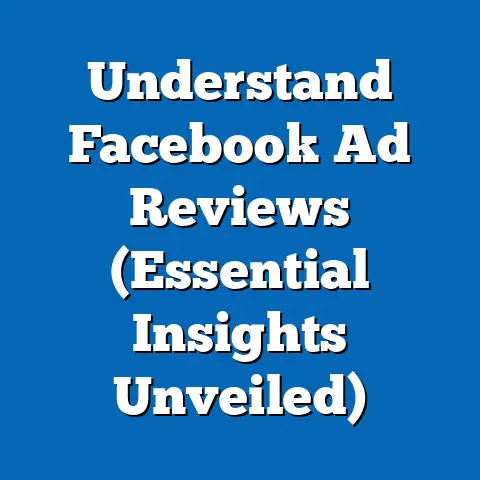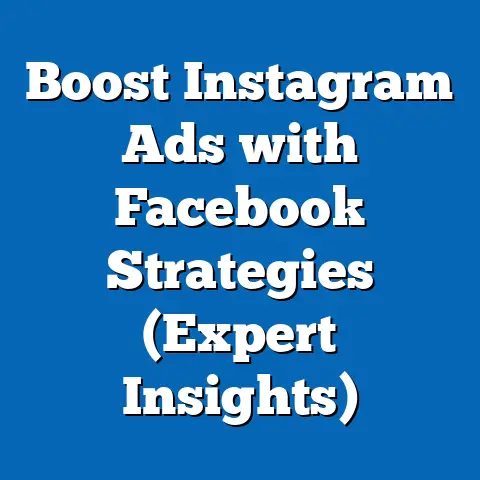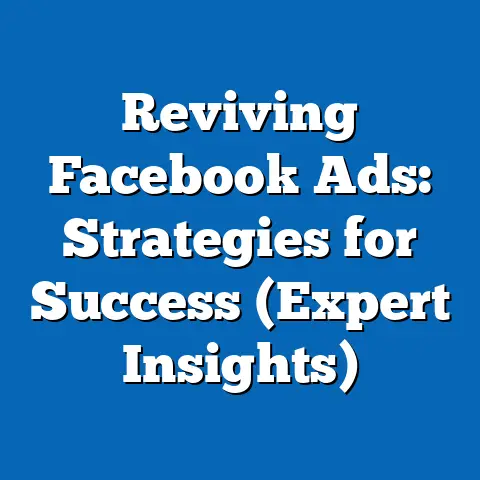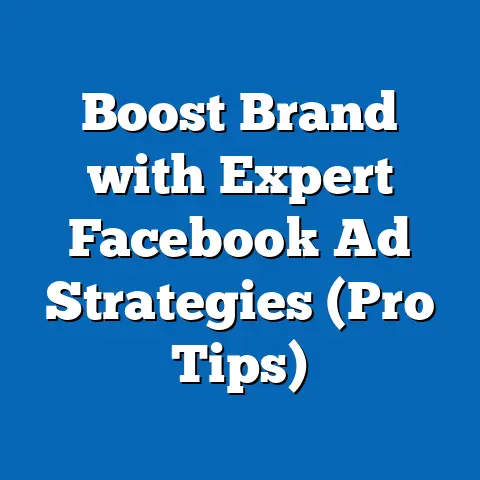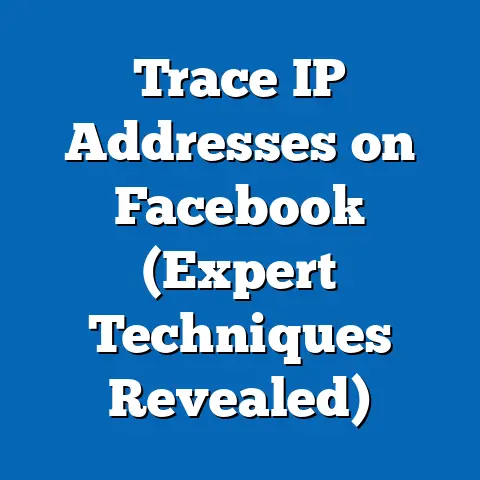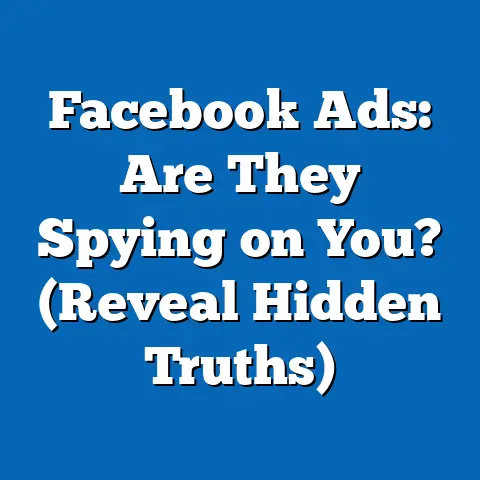Create 3-Page Facebook Ads that Convert (Proven Strategies)
I’ve spent years immersed in the world of Facebook advertising, and I’ve seen firsthand how easily marketers can fall into the trap of trying to cram too much information into a single ad. You know the type: cluttered visuals, a laundry list of features, and multiple calls to action vying for attention. The result? Confusion, disengagement, and a disappointing return on investment.
Think of it like this: imagine walking into a store and being bombarded by a salesperson shouting about every single product at once. Overwhelming, right? Facebook advertising is no different.
According to a recent study, ads with a clear and concise message have a 37% higher click-through rate than those that are overly complex. That’s a significant difference!
That’s why I want to share a proven strategy that I’ve found incredibly effective: the 3-page Facebook ad structure. This approach focuses on crafting concise, focused ads that guide potential customers through a clear path to conversion. Forget about overwhelming your audience. Instead, let’s focus on capturing their attention, piquing their interest, and driving them to action.
Understanding the 3-Page Structure of Facebook Ads
When I talk about a “3-page” structure, I’m not talking about a literal multi-page ad format. Instead, I’m referring to the three key sections that every effective Facebook ad should incorporate: the Hook, the Value Proposition, and the Call-to-Action. Think of them as the introduction, body, and conclusion of your ad.
Let’s break down each of these elements:
1. The Hook: Grabbing Attention in Seconds
In the fast-paced world of social media, you have mere seconds to capture someone’s attention. Your hook is your first impression, and it needs to be compelling enough to stop users mid-scroll.
Think of it as the headline of a news article. It needs to be intriguing, relevant, and promise value to the reader. If your hook fails, the rest of your ad won’t even be seen.
Example: Instead of a generic “Shop Our New Collection,” try something like “Struggling to Sleep? Discover the Secret to a Restful Night.”
2. The Value Proposition: Showcasing the Benefits
Once you’ve hooked their attention, you need to clearly communicate the value of your product or service. What problem does it solve? What benefits does it offer? Why should they choose you over the competition?
This is where you highlight your unique selling points (USPs) and address the audience’s pain points. It’s not enough to simply list features; you need to explain how those features translate into tangible benefits for the customer.
Example: “Our organic cotton sheets are not only incredibly soft but also hypoallergenic and sustainably sourced, ensuring a comfortable and guilt-free sleep.”
3. The Call-to-Action (CTA): Guiding the Next Step
The final page is your call to action. This is where you tell the user exactly what you want them to do next. Whether it’s visiting your website, signing up for a newsletter, or making a purchase, your CTA needs to be clear, concise, and compelling.
A well-crafted CTA removes any ambiguity and makes it easy for the user to take the desired action. Think of it as a clear and direct invitation.
Example: Instead of a vague “Learn More,” try “Shop Now & Get 20% Off Your First Order!”
Key Takeaway: The 3-page structure provides a framework for crafting focused and effective Facebook ads. By strategically incorporating a hook, value proposition, and call-to-action, you can guide potential customers through a clear path to conversion.
Proven Strategies for Each Page
Now that we understand the importance of each page in the 3-page structure, let’s dive into some proven strategies for maximizing their impact.
1. Strategies for The Hook: Capturing Attention
The hook is your opportunity to make a splash. Here are some strategies I’ve found particularly effective:
- Use Eye-Catching Images or Videos: Visuals are processed much faster than text, so using high-quality, relevant images or videos is crucial. Consider using bright colors, dynamic compositions, or intriguing scenarios to grab attention. I once ran a campaign for a local bakery using a short video of a baker pulling a freshly baked loaf of bread out of the oven. The visuals, combined with the enticing aroma (which, sadly, couldn’t be transmitted online!), resulted in a significant increase in click-through rates.
- Craft Compelling Headlines: Your headline is the first piece of text that users will see, so make it count. Use strong verbs, intriguing questions, or surprising statistics to pique their interest. A/B test different headlines to see what resonates best with your target audience.
- Leverage Emotional Triggers or Humor: Connecting with your audience on an emotional level can be incredibly powerful. Consider using humor, empathy, or inspiration to create a connection. However, be mindful of your brand’s tone and avoid being overly sensational or manipulative.
Example:
- Bad Hook: “Our New Product is Here!” (Generic and uninspired)
- Good Hook: “Tired of Wasting Time on Tedious Tasks? Automate Your Workflow with Our New Software.” (Addresses a pain point and offers a solution)
2. Strategies for The Value Proposition: Showcasing the Benefits
Once you’ve hooked their attention, it’s time to demonstrate the value of your product or service. Here are some strategies to consider:
- Highlight Unique Selling Points (USPs): What makes your product or service different from the competition? Focus on your USPs and clearly communicate the benefits they offer. Don’t just list features; explain how those features translate into tangible benefits for the customer.
- Utilize Testimonials and Social Proof: People are more likely to trust recommendations from others than claims made by a company. Include testimonials, reviews, or case studies to build credibility and demonstrate the value of your product or service.
- Create Urgency Through Limited-Time Offers or Scarcity Tactics: Creating a sense of urgency can encourage users to take action sooner rather than later. Consider offering limited-time discounts, free shipping, or exclusive bundles to incentivize purchases.
Example:
- Bad Value Proposition: “Our product is high-quality.” (Vague and unsubstantiated)
- Good Value Proposition: “Our product is made with premium materials and backed by a lifetime warranty, ensuring long-lasting durability and peace of mind.” (Specific and demonstrates value)
3. Strategies for The Call-to-Action: Guiding the Next Step
Your call to action is the final piece of the puzzle. Here are some strategies to ensure it’s effective:
- Use Action-Oriented Language: Your CTA should be clear, concise, and tell the user exactly what you want them to do. Use strong verbs like “Shop Now,” “Sign Up,” “Download,” or “Get Started.”
- A/B Test Different CTAs: Experiment with different CTA wording, colors, and placement to see what resonates best with your audience. Small tweaks can often lead to significant improvements in conversion rates.
- Optimize Design Elements: The design of your CTA button can also impact its effectiveness. Use contrasting colors to make it stand out, ensure it’s appropriately sized for mobile devices, and place it in a prominent location.
Example:
- Bad CTA: “Click Here” (Vague and uninspired)
- Good CTA: “Claim Your Free Trial Now!” (Clear, concise, and offers a specific benefit)
Key Takeaway: By implementing these proven strategies for each page of your Facebook ad, you can significantly increase its effectiveness. Remember to constantly test and optimize your ads to find what resonates best with your target audience.
Analyzing Successful Facebook Ads
Let’s take a look at some real-world examples of successful Facebook ads that effectively utilize the 3-page approach:
Example 1: Dollar Shave Club
Dollar Shave Club is known for its humorous and engaging Facebook ads. Their ads typically feature:
- Hook: A funny and relatable video that grabs attention.
- Value Proposition: A clear explanation of the benefits of their subscription service (convenience, affordability, quality).
- CTA: A clear and direct call to “Join Now” or “Get Started.”
Why it works: The humor makes the ad memorable and shareable, while the value proposition clearly addresses the audience’s pain points (expensive and inconvenient razors).
Metrics: High click-through rates, low cost per acquisition.
Example 2: Warby Parker
Warby Parker is a direct-to-consumer eyewear brand that has mastered the art of Facebook advertising. Their ads often feature:
- Hook: A stylish image or video showcasing their latest frames.
- Value Proposition: A clear explanation of their home try-on program, which allows customers to try on frames for free before committing to a purchase.
- CTA: A clear call to “Shop Now” or “Try Our Home Try-On Program.”
Why it works: The stylish visuals attract attention, while the home try-on program removes a significant barrier to purchase (not being able to try on glasses in person).
Metrics: High conversion rates, strong brand awareness.
Key Takeaway: These examples demonstrate the power of the 3-page structure when combined with compelling visuals, clear messaging, and a strong understanding of the target audience.
Conclusion
In the crowded landscape of Facebook advertising, it’s easy to get lost in the noise. But by focusing on the 3-page structure—hook, value proposition, and call-to-action—you can create ads that cut through the clutter, capture attention, and drive conversions.
Remember, the key is to be concise, focused, and strategic. Avoid the temptation to overload your ads with too much information. Instead, focus on delivering a clear and compelling message that resonates with your target audience.
I encourage you to take action today and start implementing these strategies in your next Facebook ad campaign. By doing so, you’ll be well on your way to creating ads that not only capture attention but also drive meaningful results for your business.
So, go ahead, give it a try! I’m confident that you’ll see a positive impact on your advertising performance.

